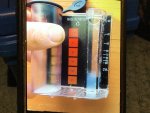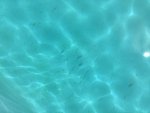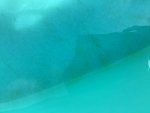Earlier e floorthis summer our pool got really green and opaque, so before I joined here I had go e to the pool store as usual and bought a latge bottle of algaecide and a bottle of water clarifier. After using both and cleaning the filter about a hundred times, the water got rea nice and clear, by then I had joined TFP.com and read up on all these chemicals, so I just received my k-2006 test kit a few days ago because the water is quickly turning cloudy and a darkish film is building up around the edges along the floor. We also have a small tear in the floor that I need to patch, but its only about an inch long, and if I vacuum the pool, within 24hrs it was gets what look like super fine sand all over the floor and it sticks to any of the small seams in the floor and I dont know of this could be coming from sand in the hole but it doesn’t loom to be eroding away at all. But my real immediate issue is the water balance, after testing the numbers are really bad, here thay are:
Free chlorine=11 ppm
Combined chlorine=0.4 ppm
Alkalinity (TA)= 90 ppm
PH= 7.0 (took 10 drops to raise)
Hardness= 80 ppm
The water balance calculator shows my saturation index is at -1.05
The CYA is a problem because the black dot goes away well below even the 100 on the scale, (i’v Attached a picture of it)
I did all the tests twice to be sure, we use an inline chlorine “cartridge”, and have for 15 years, and for some reason during this whole process of clearing the water the cartridge has been running out way too soon. In the future if I start to follow the methods this website promotes, such as only using liquid chlorine etc. I assume I would not want to be using thos cartridges any longer, because as I understand the use of that cartridge along with powdered shock is the reason my CYA is through the roof? I hope to find out if these levels could be the cause of my water not staying clear, and also how to correct these levels using TFPs methods, thanks.
Free chlorine=11 ppm
Combined chlorine=0.4 ppm
Alkalinity (TA)= 90 ppm
PH= 7.0 (took 10 drops to raise)
Hardness= 80 ppm
The water balance calculator shows my saturation index is at -1.05
The CYA is a problem because the black dot goes away well below even the 100 on the scale, (i’v Attached a picture of it)
I did all the tests twice to be sure, we use an inline chlorine “cartridge”, and have for 15 years, and for some reason during this whole process of clearing the water the cartridge has been running out way too soon. In the future if I start to follow the methods this website promotes, such as only using liquid chlorine etc. I assume I would not want to be using thos cartridges any longer, because as I understand the use of that cartridge along with powdered shock is the reason my CYA is through the roof? I hope to find out if these levels could be the cause of my water not staying clear, and also how to correct these levels using TFPs methods, thanks.





